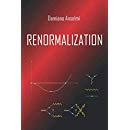It is normally believed that viewing time as time, that is to say a real coordinate $t$ with a Minkowski metric, is equivalent to viewing it as a space coordinate $x^4$ (with a Euclidean metric) that is turned into imaginary values by means of the Wick rotation. Indeed, most quantum field theories, including the standard model, can be equivalently formulated directly in Minkowski spacetime or by Wick rotating their Euclidean versions.
However, in a recent paper it was shown that the two formulations are not always equivalent. In particular, they are not equivalent in a wide realm of quantum field theories that is relevant for the search of quantum gravity.
The two formulations differ so much that one of the two, the Minkowski one, is mathematically inconsistent, because it leads to nonlocal divergences that cannot be subtracted away. The only viable formulation of quantum field theory is thus the Wick rotation of a Euclidean theory.
This observation could have very broad consequences. Ultimately, it tells us that the environment of quantum field theory is not Minkowski spacetime, but a different kind of spacetime, which we may call Wick spacetime, that is to say the Wick rotated Euclidean space.
If we believe that quantum field theory is the correct framework to describe nature, as all experimental evidence suggests so far, the conclusion extends from quantum field theory to nature itself, i.e.
the universe does not live in Minkowski spacetime, but in Wick spacetime.
Said differently,
time is not time, but an imaginary space.
The cutting equations are diagrammatic identities that are used to prove perturbative unitarity in quantum field theory. In this paper, we derive algebraic, upgraded versions of them. Differently from the diagrammatic versions, the algebraic identities also holds for propagators with arbitrary, nonvanishing widths. In particular, the cut propagators do not need to vanish off shell. The new approach provides a framework to address unsolved problems of perturbative quantum field theory and a tool to investigate perturbative unitarity in higher-derivative theories that are relevant to the problem of quantum gravity, such as the Lee-Wick models and the fakeon models.
Ann. Phys. 394 (2018) 294 | DOI: 10.1016/j.aop.2018.04.034
We show that Minkowski higher-derivative quantum field theories are generically inconsistent, because they generate nonlocal, non-Hermitian ultraviolet divergences, which cannot be removed by means of standard renormalization procedures. By “Minkowski theories” we mean theories that are defined directly in Minkowski spacetime. The problems occur when the propagators have complex poles, so that the correlation functions cannot be obtained as the analytic continuations of their Euclidean versions. The usual power counting rules fail and are replaced by much weaker ones. Self-energies generate complex divergences proportional to inverse powers of D’Alembertians. Three-point functions give more involved nonlocal divergences, which couple to infrared effects. The violations of the locality and Hermiticity of counterterms are illustrated by means of explicit computations in scalar models and higher-derivative gravity.
Eur. Phys. J. C 77 (2017) 84 | DOI: 10.1140/epjc/s10052-017-4646-7
We reconsider perturbative unitarity in quantum field theory and upgrade several arguments and results. The minimum assumptions that lead to the largest time equation, the cutting equations and the unitarity equation are identified. Using this knowledge and a special gauge, we give a new, simpler proof of perturbative unitarity in gauge theories and generalize it to quantum gravity, in four and higher dimensions. The special gauge interpolates between the Feynman gauge and the Coulomb gauge without double poles. When the Coulomb limit is approached, the unphysical particles drop out of the cuts and the cutting equations are consistently projected onto the physical subspace. The proof does not extend to nonlocal quantum field theories of gauge fields and gravity, whose unitarity remains uncertain.
Phys. Rev. D 94 (2016) 025028 | DOI: 10.1103/PhysRevD.94.025028
We study some properties of the canonical transformations in classical mechanics and quantum field theory and give a number of practical formulas concerning their generating functions. First, we give a diagrammatic formula for the perturbative expansion of the composition law around the identity map. Then, we propose a standard way to express the generating function of a canonical transformation by means of a certain “componential” map, which obeys the Baker-Campbell-Hausdorff formula. We derive the diagrammatic interpretation of the componential map, work out its relation with the solution of the Hamilton-Jacobi equation and derive its time-ordered version. Finally, we generalize the results to the Batalin-Vilkovisky formalism, where the conjugate variables may have both bosonic and fermionic statistics, and describe applications to quantum field theory.
Eur. Phys. J. C 76 (2016) 49 | DOI: 10.1140/epjc/s10052-015-3874-y
The properties of quantum gravity are reviewed from the point of view of renormalization. Various attempts to overcome the problem of nonrenormalizability are presented, and the reasons why most of them fail for quantum gravity are discussed. Interesting possibilities come from relaxing the locality assumption, which can inspire the investigation of a largely unexplored sector of quantum field theory. Another possibility is to work with infinitely many independent couplings, and search for physical quantities that only depend on a finite subset of them. In this spirit, it is useful to organize the classical action of quantum gravity, determined by renormalization, in a convenient way. Taking advantage of perturbative local field redefinitions, we write the action as the sum of the Hilbert term, the cosmological term, a peculiar scalar that is important only in higher dimensions, plus invariants constructed with at least three Weyl tensors. We show that the FRLW configurations, and many other locally conformally flat metrics, are exact solutions of the field equations in arbitrary dimensions $d>3$. If the metric is expanded around such configurations the quadratic part of the action is free of higher-time derivatives. Other well-known metrics, such as those of black holes, are instead affected in nontrivial ways by the classical corrections of quantum origin.
Mod. Phys. Lett. A 30 (2015) 1540004 | DOI: 10.1142/S0217732315400040

 Quantum Gravity
Quantum Gravity 


